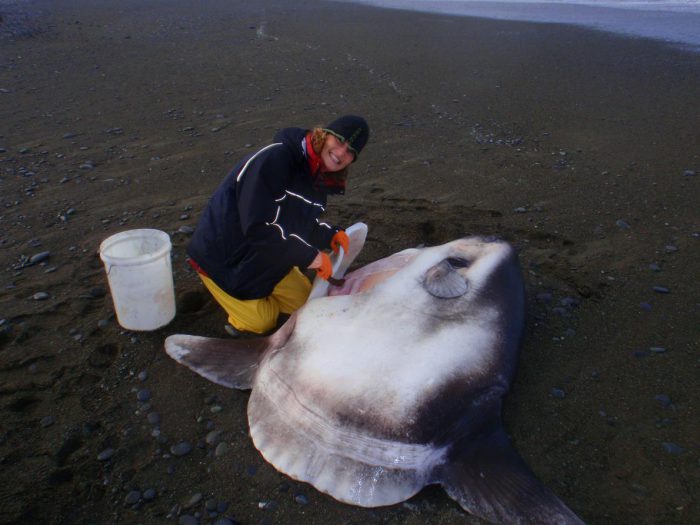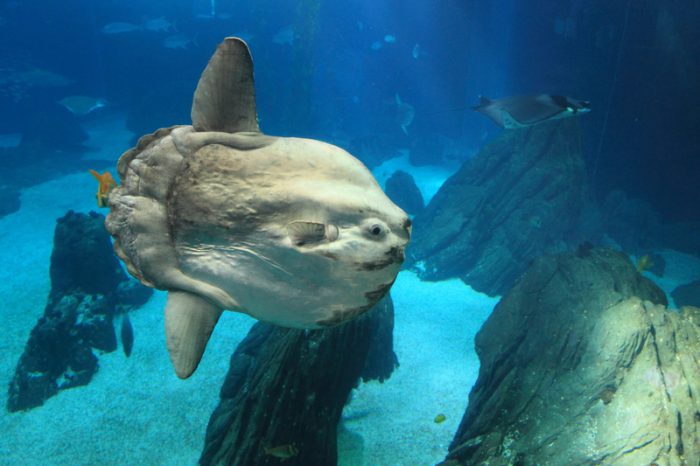Quick quiz: What is the largest bony fish?
If you said "Whale shark," we'd say "Great guess... but you're wrong."
The ocean sunfish, or Mola mola. (Getty Embed)
Whale sharks are indeed the largest fish in the world, but, like all sharks, their skeletons are made of cartilage, not bone. Instead, the title of largest bony fish goes to the sunfish. These big, unusual, and slow-moving fish look something like a large circle with a pair of fins (hence the name sunfish!). They are also quite rarely found, and then usually only seen swimming alone.
Which would make the discovery of a new sunfish species something to talk about, right? Well, get ready to start talking... about the hoodwinker sunfish—the first new species found in 130 years!
The search began in the lab
Sunfish like to lay on their side and bask in the sunlight to warm themselves after diving into deep, colder water. (Getty Embed)
Normally, scientists discover a new species of animal or plant by luck. While out in the wild collecting information, a researcher comes across something that seems odd. The life form is collected and brought to a lab. Upon further inspection and tests, a new species is confirmed.
But this particular discovery had a different beginning. In a laboratory at Murdoch University in Australia, a PhD student named Marianne Nyegaard was leading a team of researchers. They were analyzing 150 DNA samples from sunfish. Through this research, they found that each of the samples belonged to one of four distinct species of sunfish. That sounds pretty routine to us. Except only three of these species had been previously identified!
A name in hiding
What was the mysterious fourth sample? Marianne and her team gave the fish a name. The hoodwinker sunfish, from the term "hoodwinked", meaning "to be fooled." (The scientific name, Mola tecta, comes from the Latin tectus, meaning "hidden.")
But despite these terrific names, there was still a problem. No one had confirmed 100% that it belonged to a real-life sunfish. The search in reverse was on!
Let's hit the beach!

Collecting samples from what turned out to be a beached hoodwinker sunfish. Finally found! (Courtesy of Marianne Nyegaard)
Marianne's next breakthrough came in May of 2014. She got a tip from a fishery in New Zealand that four sunfish had washed up on a beach in the city of Christchurch. So it was on to a plane to check out the evidence. After getting some samples to investigate—and a few years of more analysis and tests—Marianne was finally able to confirm it. She had found her "hidden" fish!
This photo shows the typical snout and skin texture of a sunfish. Hoodwinkers are smoother and sleeker. (Getty Embed)
The hoodwinker has a slimmer, smoother body than other sunfish. Other species have a protruding snout and many bumps on the body, but not the hoodwinker. You could almost say that those features are... hidden? Ha!
Either way, congratulations to Marianne and her team for some top-notch biological detective work. No one is fooling them anymore!
 The ocean sunfish officially has company. Read on to find out about it's "hidden" relative... (© Lukas Blazek | Dreamstime)
The ocean sunfish officially has company. Read on to find out about it's "hidden" relative... (© Lukas Blazek | Dreamstime)









